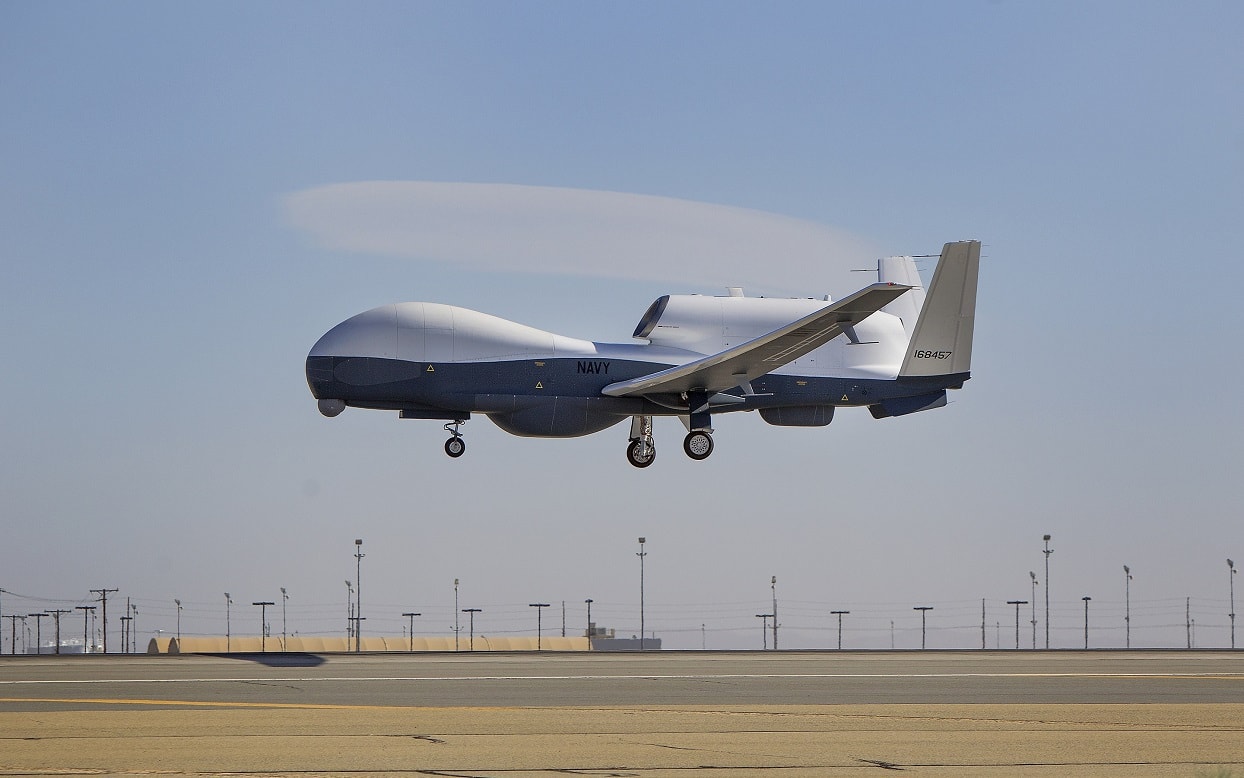The U.S. Navy reconnaissance airplanes are getting tired. The aging EP-3 Aries signals intelligence aircraft is leaving the fleet. The P-3 Orion was introduced almost 50 years ago. The P-8A Poseidon needs to focus its attention on anti-submarine warfare rather than general intelligence and surveillance snooping.
Enter the navy’s new MQ-4C Triton drone.
The Triton is definitely an upgrade and will allow the navy to have strategic levels of intelligence without having to worry about older manned reconnaissance aircraft being retired.
The Triton Surveillance Drone Is Already Flying High
The Triton MQ-4C unmanned aircraft system has already been successfully tested in August over southern Maryland with its high-level intelligence gathering payload called the Integrated Functional Capability Four (IFC-4). The system makes the navy’s version of the strategic reconnaissance drone, based on the U.S. Air Force’s RQ-4 Global Hawk, that much better.
The MQ-4C Triton’s IFC-4 is reportedly performing stronger than expected.
The Triton is based on the venerable U.S. Air Force’s Global Hawk, which is a global reconnaissance drone that has collected over 320,000 flight hours with continuous duty over Iraq and Afghanistan. Now the navy believes their recon drone will be even better than the Global Hawk.
Many Uses and Great Specs
The turbofan-powered Triton, in addition to intelligence and reconnaissance, can also be used for search and rescue, signals intelligence and communications relay. This semi-autonomous drone can fly 24 hours a flight with a ceiling that is 10 miles high, and with a range of 8,200 nautical miles. This drone will be based in Guam, however, the main area of operations will be East Asia and the South and East China Seas.
A Spotter for Hypersonic Missiles?
The navy will be utilizing over-the-horizon missiles in that region and the Triton strategic drone is perfect for gathering intelligence to make those launches more successful if needed in potential conflict. It will fly at very high altitudes to better evaluate information and find targets. This is the “long-range fires” concept. Triton would be also be a good 24-7 spotter for the navy’s Long-Range Hypersonic Weapon, also called the “Common-Hypersonic Glide Body” that is being developed. The navy successfully tested the second stage of its solid rocket motor for their hypersonic weapon in August, so that program is proceeding according to plan.
The Bottom Line: The Navy Really Needed the Triton
It’s about time the Navy got its own strategic long-range intelligence, surveillance, and reconnaissance drone. Its manned ISR aircraft needed an upgrade. The Triton was a billion-dollar program when it began in 2008 and after all those years in development, it’s good to see this drone come to fruition.
Basing it in Guam makes sense. This is the center of gravity for the United States and an indispensable part of the Pacific strategy vis-a-vis China. The Triton can also fly over the Taiwan Strait and give early warning if an amphibious attack ever came from the People’s Liberation Army Navy. Freeing up the P-8A Poseidon to concentrate its capabilities on anti-submarine warfare is also a plus. The Triton MQ-4C is the right aircraft at the right time.
1945’s new Defense and National Security Editor, Brent M. Eastwood, PhD, is the author of Humans, Machines, and Data: Future Trends in Warfare. He is an Emerging Threats expert and former U.S. Army Infantry officer.

